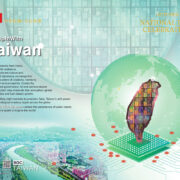SC innovation: High-Performance Courts

In line with its Strategic Plan for Judicial Innovations (SPJI) from 2022 to 2027, the Supreme Court is initiating “High-Performance Courts” by creating key performance indicators (KPIs) and other metrics, like those used in the private sector to measure the HPCs’ efficiency and effectiveness in the delivery of speedy, quality justice.
WELL-AWARE OF THE PERENNIAL COMPLAINTS OF CLOGGED DOCKET, case delays and the consequent distrust of the general public, the Court, to begin with, focused on the trial courts because they are the “frontliners of the judiciary” that the public has contact with.
It created a committee chaired by Associate Justice Alfredo Benjamin S. Caguioa that adopted four administrative principles to characterize HPCs by: (1) giving every case individual attention; (2) treating cases proportionately; (3) demonstrating procedural justice; and (4) exercising judicial control over the legal process. In short, HPCs must view their performance according to the lens of the judicial stakeholders— the judges, court personnel, litigants, lawyers and the public—in a balanced fashion.
After several meetings, the Caguioa committee—with consultants Dr. Ramon Segismundo, Dr. Marshall Valencia, and Ronaldo Ruiz—agreed upon these KPIs, divided into four “quadrants:”
QUADRANT 1—ON INTERNAL PROCESS with 40 percent weight: the KPIs and their measurements are on the (a) percentage of cases resolved, (b) ratio of cases resolved vs. filed, (c) percentage of cases processed on time, and (d) average case processing time (days).
Q2—on decision-making quality, 20 percent: percentage of decisions upheld by the Court of Appeals.
Q3—on court users’ satisfaction, 25 percent: percentage of positive ratings on a survey that include (a) access to the court, (b) court services, (c) efficiency, (d) court staff and judges’ conduct, (e) fairness and impartiality, (f) facilities and infrastructures, (g) communication, (h) technology use and innovation, (i) accessibility for vulnerable groups, and (j) overall experience satisfaction.
Q4—on internal or employee engagement, 15 percent: survey results from the court personnel’s percentage of positive ratings (strongly agree and agree responses to 10 metrics like workload management, professional growth, relationship with the judge, compensation, work environment, etc.).
The committee endorsed and the Chief Justice approved these four quadrants of metrics that the judges themselves, court staff members, lawyers, and litigants would rate themselves periodically over a certain period of time with the view of improving their honest rating using the tools and training they would be given.
BY TRACKING THEIR PERFORMANCE, judges will know whether they are going in the right direction via a tool to help them perform better. The self-rating “will not be used to punish anyone.”
After its approval, the committee’s plan was implemented in eight pilot areas: two branches each in Pampanga, La Union, and Cavite and one branch each in Antipolo and Mandaluyong. Areas close to or inside Metro Manila were chosen based on (1) their high disposition and clearance rates and (2) geographical closeness to the Supreme Court headquarters to cope more easily with “logistical considerations.”
I am very pleased to note that the survey questions can easily be answered in a few minutes. They do not require the identity of the responder but ask for their gender, age, type of user (whether plaintiff, defendant, witness, counsel, etc.), court branch number, and geographical location.
The written questionnaire simply requires the checking of one of five spaces for each question: whether the respondent “strongly disagrees, disagrees, is neutral, agrees, or strongly agrees.”
Three sample questions are: “I have access to the necessary tools and resources to perform my job effectively,” “I have a positive and supportive relationship with my judge,” and “Overall, I am satisfied with my experience in the court and its services.”
ALL THE PUBLICLY LISTED COMPANIES I am a director or adviser of conduct similar KPIs regarding the performance of the board of directors, board committees, and officers (including the chair, president and CEO, CFO, internal audit head, etc.). While no sanctions are imposed, at times, however, it is employed in promotions and remunerations.
An outstanding president and CEO, Lance Gokongwei (a summa cum laude graduate of the Wharton School of Business at the University of Pennsylvania), is so strict that he rated himself failing grades as low as 60 percent because one of his group’s companies, Cebu Pacific, lost billions of pesos during the COVID-19 years. With such a strict rating, his subordinates could not rate themselves higher.
But as I said, these KPIs are meant to improve performance. And Mr. Gokongwei achieved, as expected, much better performance from himself and his people when the COVID years ended and his airline unleashed much improved results.
This is a major lesson learned for our judiciary. Instead of giving excuses, be honest with the KPIs to establish—to borrow the words of J Caguioa—”a unified standard of performance across all trial courts.”





















